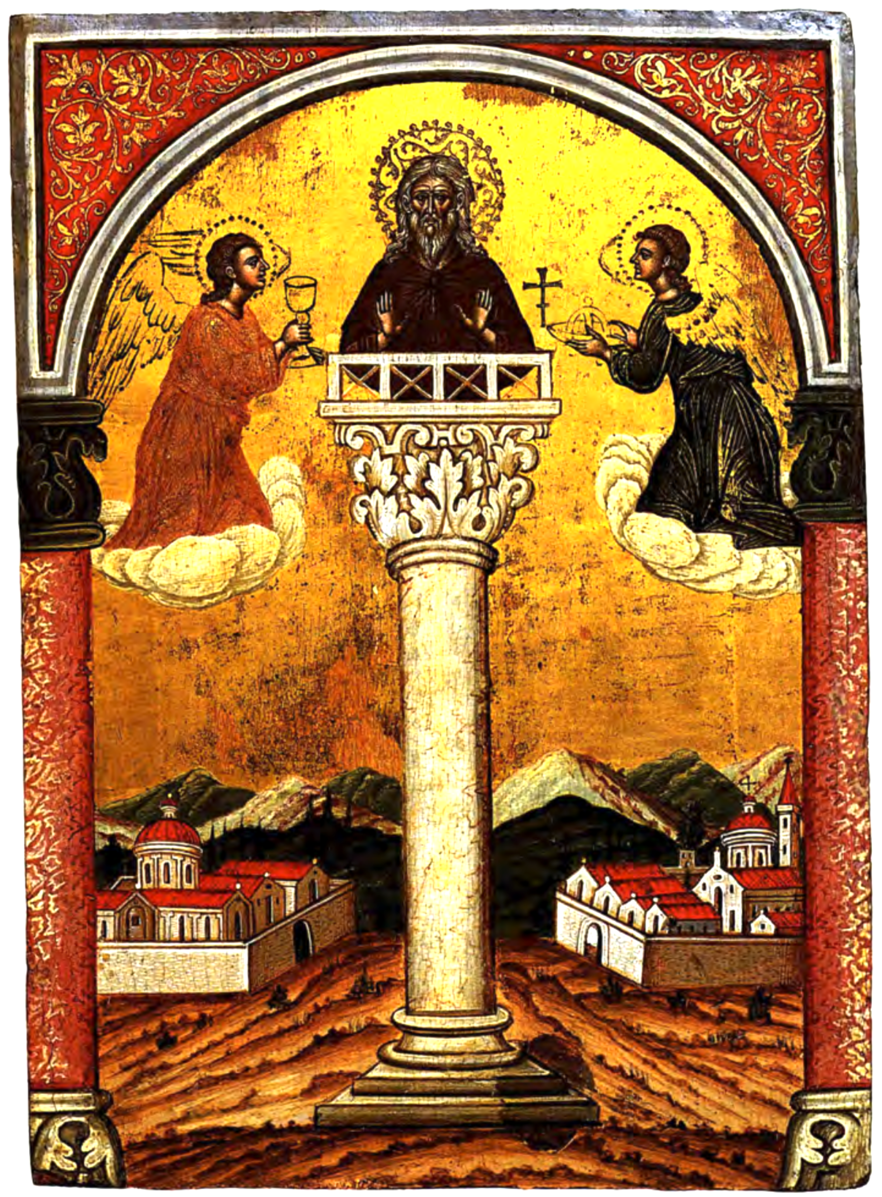In the Roman Catholic and Orthodox traditions, today is the feast day of several saints who were hermits: St. Stylianos of Paphlagonia (fifth century), and Alypius the Stylite and Basolus of Verzy (both seventh century). Regardless of your views on saints, it is worth considering what the practices of these men can tell us about the connection between solitude and serving the community.
St. Stylian’s devotion and asceticism provoked jealousy among his fellow monastics, so he left the monastry and sought a place where he could be at peace and have leisure to fast, pray, and meditate on creation, finding God in all things. As news of his holiness spread, people would seek him out to pray for them or their children.
Alypius the Stylite was one of three ascetic monks who lived separately from their communities. He built a church in honor of the martyr who was his model, St. Euphemia, and requested permission to practice the life of a hermit, but when his request was denied, he instead perched atop a pillar next to his church. Monastic houses for both monks and nuns were built at the foot of his pillar, and his advice was constantly sought by the leaders of both houses, as well as by individuals seeking spiritual guidance.
Basolus of Verzy was also a Benedictine monk who, like Alypius, left his monastic cell to became a hermit, living alone for forty years on a hill near Reims, where he became famous as a miracle worker, curing those who sought his prayers.
Both the rational and spiritual aspects of our lives require the discipline of study, and we can sometimes forget, when scheduling time to attend class, read assignments, practice skills, and review, that we also need time for contemplation and wonder, for prayer and meditation. Study alone is not enough to gain the insight and perspective we need to see how what we are learning can be best applied. We also need time to explore the relationships between one idea and another, as well as the possible consequences of proposed actions.
The three hermit saints that mentioned here found it necessary to withdraw physically to achieve the silence they needed to grow in faith. Only then could they serve the individuals from the communities around them who sought their help.
Such a constant withdrawal is not practical for most of us. What we can do is make sure that in scheduling classes and homework time, we also schedule a regular time for meditation and contemplation.

